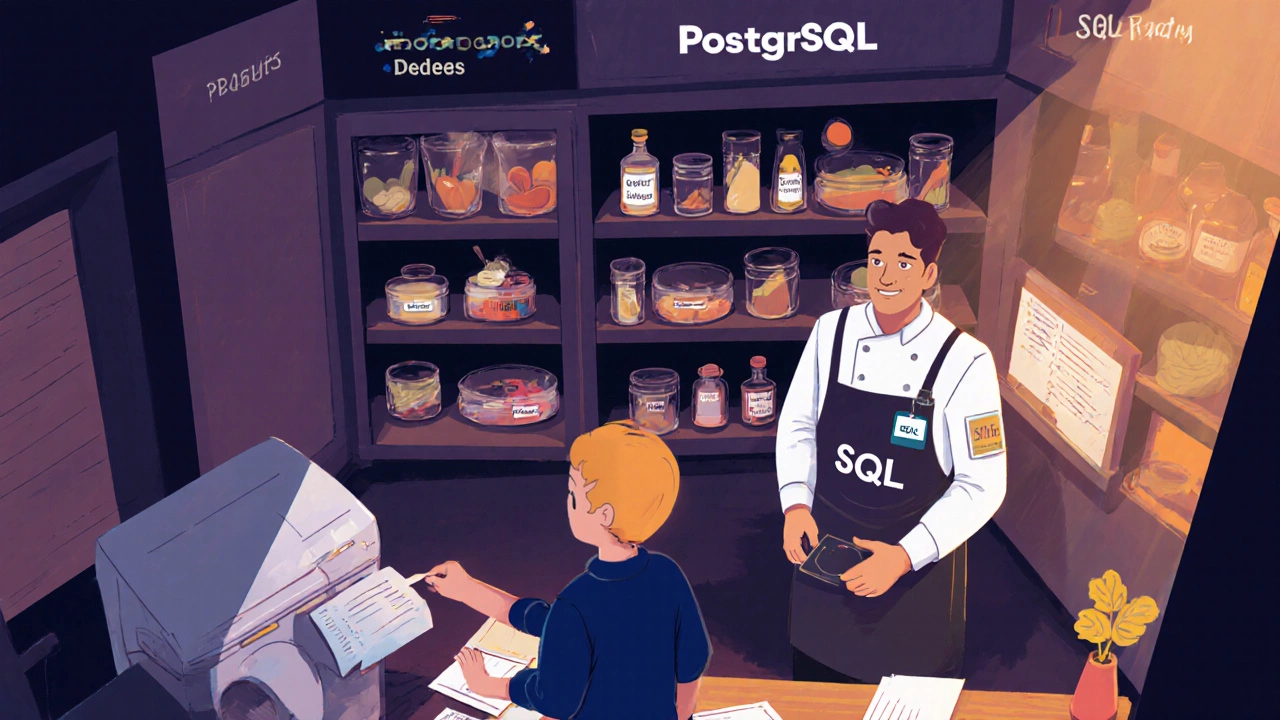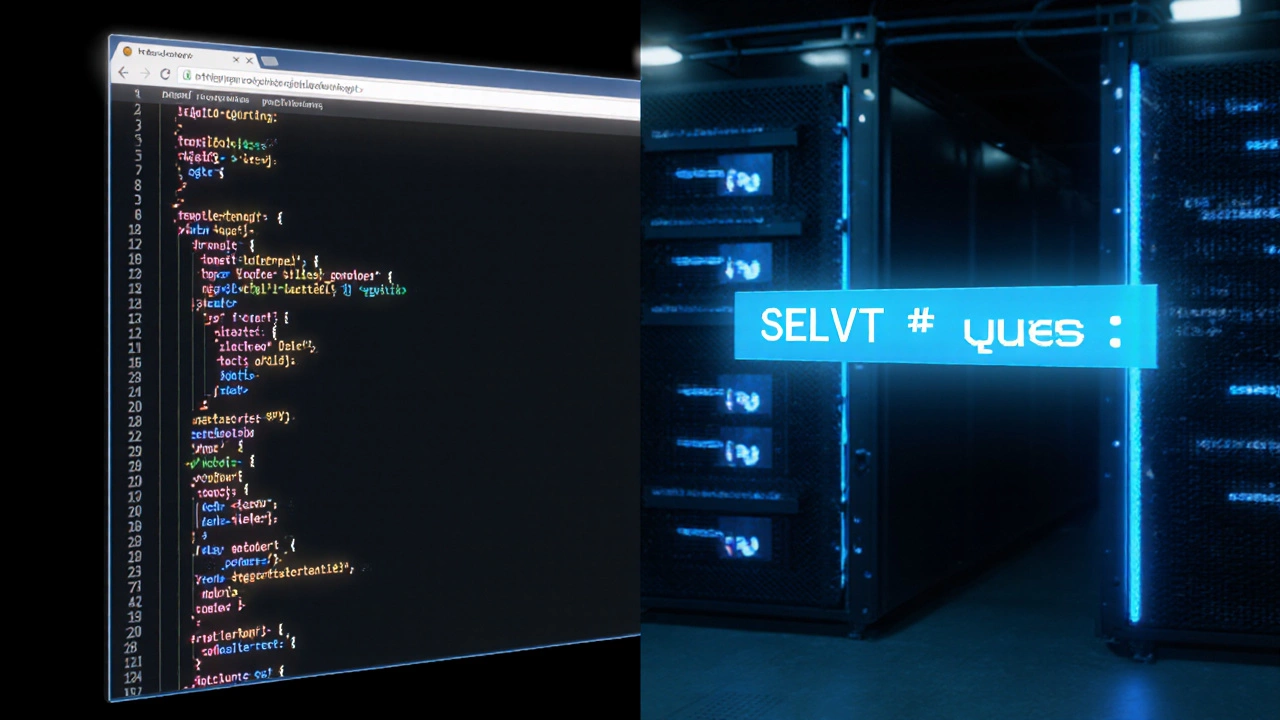SQL Backend or Frontend? Quick Quiz
Question 1:
Where does SQL actually run in a web application?
Question 2:
What's the main security risk of trying to run SQL directly in the browser?
Question 3:
When you see data displayed on a website (like a product list), how did that data get there?
Question 4:
Which of the following is NOT a common misconception about SQL?
Question 5:
What should a frontend developer know about SQL to be more effective?
Your Results
Ever stared at a web form and wondered where the data goes after you hit submit? Or seen a developer talk about SQL and assumed it’s part of the website you click around on? You’re not alone. A lot of people new to web development think SQL is something you write in the browser - like JavaScript or CSS. It’s not. And that confusion can slow you down big time.
SQL Lives on the Server, Not in the Browser
SQL - Structured Query Language - is a language used to talk to databases. It’s how you ask for data, add new records, update existing ones, or delete what’s no longer needed. But here’s the key: SQL never runs in the browser. You can’t type SELECT * FROM users; into your Chrome DevTools console and expect it to work. The browser doesn’t understand SQL. It doesn’t have a database engine built in.
Instead, SQL runs on a server. That server could be a Linux machine in a data center, a cloud instance from AWS or Google Cloud, or even a local database like SQLite on your own laptop during development. When you log into a website, submit a contact form, or search for a product, your browser sends a request to that server. The server then uses SQL to query the database, grabs the right data, and sends back only what the front end needs - usually in JSON format.
What the Front End Actually Sees
The front end - the part users interact with - is made of HTML, CSS, and JavaScript. These technologies handle layout, styling, and user interaction. When you type your name into a signup form, JavaScript collects that data and sends it to the server via an API call - often using fetch() or axios().
That API call? It’s not SQL. It’s HTTP. The server receives that request, processes it with a backend language like Python, Node.js, or PHP, and then uses SQL to save your name into the database. The front end never touches SQL. It only sees the response: {"success": true, "userId": 123}.
Think of it like ordering food. You (the front end) tell the waiter your order. The waiter (the API) takes it to the kitchen (the backend). The chef (SQL) cooks the meal using ingredients from the pantry (the database). You never see the chef or the pantry. You just get your plate.
Why People Get Confused
There are a few reasons SQL feels like it belongs on the front end:
- Tools like phpMyAdmin or DBeaver - these let you write SQL directly in a browser window. But those are database management tools, not part of your website. They’re like having a wrench in your garage - useful, but not part of the car you drive.
- ORMs (Object-Relational Mappers) - tools like Django’s ORM or Sequelize let you write code that looks like JavaScript or Python, but behind the scenes, they generate SQL. You’re still not writing SQL in the browser; you’re writing high-level code that gets translated on the server.
- Frontend frameworks show database data - React, Vue, or Angular display data from a database, but they don’t connect to it directly. They get it through an API. That’s a critical separation.
Confusing the display of data with the storage of data is a common mistake. Just because you see a list of products on a webpage doesn’t mean SQL is running there. It means someone wrote a backend that used SQL to fetch those products and sent them to the front end as clean JSON.

What Happens If You Try to Use SQL in the Front End?
Let’s say you try to connect your React app directly to a PostgreSQL database using a library that claims to let you run SQL in the browser. Bad idea. Here’s why:
- Security risk - Your database credentials would be exposed in the browser’s source code. Anyone can open DevTools and steal your username and password.
- Performance hit - Databases aren’t designed to handle hundreds of random requests from random users’ browsers. Your server would get overwhelmed.
- No control - You can’t limit what users can do. One person could delete your entire customer table with a single query.
Real-world example: In 2023, a small e-commerce site got hacked because a developer used a library that allowed SQL queries from the frontend. The attacker ran DROP TABLE customers; - and lost 87,000 user records. The fix? Move all database logic to the backend and enforce strict API permissions.
Where SQL Fits in a Full Stack App
Here’s how SQL fits into the full stack:
- Frontend: User clicks "Save" → JavaScript collects data → sends POST request to API endpoint
- Backend: Server receives request → validates input → runs SQL query like
INSERT INTO users (name, email) VALUES ('Jane', '[email protected]'); - Database: PostgreSQL or MySQL executes the query → returns success/failure
- Backend: Sends JSON response back to frontend:
{"status": "success"} - Frontend: Shows "Saved!" message to user
SQL is the middle step - the bridge between your app’s logic and its persistent data. It’s not visible to users, but without it, your app has no memory. Every login, every purchase, every saved preference? That’s SQL at work.

Do Frontend Developers Need to Know SQL?
You don’t need to write SQL to build beautiful interfaces. But if you want to become a full stack developer - or even just understand how your app really works - you need to know the basics.
Here’s what’s useful for frontend devs:
- Understanding how data is structured (tables, columns, relationships)
- Knowing how to read a simple SELECT query so you can guess what data the API will return
- Recognizing when an API response is missing fields because the backend query is broken
- Communicating better with backend devs - instead of saying "Why isn’t my data loading?", you can ask, "Is the query filtering by user ID correctly?"
You don’t need to be a database admin. But if you can read a basic SQL query, you’ll solve bugs faster and become a much more valuable team member.
Common Misconceptions Debunked
Let’s clear up a few myths:
- Myth: "Firebase or Supabase means I don’t need SQL." Truth: Supabase is built on PostgreSQL. Firebase Realtime Database uses JSON, but Firestore uses a document model that’s still backed by a database engine - and you can write SQL-like queries with Firestore’s query API. It’s not SQL, but the concept is the same.
- Myth: "NoSQL means no SQL." Truth: NoSQL databases (like MongoDB) don’t use SQL, but they still need backend code to access them. The frontend still doesn’t touch them directly.
- Myth: "I use a CMS like WordPress, so I don’t need SQL." Truth: WordPress runs on MySQL. Every post, comment, and setting is stored via SQL queries. You just don’t see them.
What Should You Learn Next?
If you’re a frontend developer and want to understand where SQL fits:
- Learn how to write a simple
SELECTquery to pull data from one table - Understand what a primary key and foreign key are
- Look at the network tab in DevTools - find the API call that loads your data, then ask your backend teammate what SQL query generates it
- Try building a simple backend with Node.js and Express that connects to SQLite - just to see how SQL is called from code
You don’t need to master SQL to be a great frontend developer. But knowing how it connects to your work makes you less of a black box and more of a problem-solver.
Can I use SQL directly in JavaScript?
No, you cannot run SQL directly in JavaScript inside a browser. Browsers don’t have built-in SQL engines. Any library claiming to do this exposes your database to serious security risks. SQL must always run on a secure server, not in the client’s browser.
Do frontend developers need to write SQL?
You don’t need to write SQL to build UIs, but understanding basic queries helps you debug data issues, communicate with backend teams, and predict what data will come from an API. It’s not required - but it’s extremely useful.
Is SQL part of the backend or frontend in React apps?
In React apps, SQL is always part of the backend. React handles the user interface. Any data from a database comes through an API endpoint, which is powered by backend code (like Node.js or Python) that runs SQL queries on a server.
Can I connect React to a MySQL database directly?
Technically, yes - but you should never do it. Connecting React directly to MySQL exposes your database credentials to everyone who visits your site. This is a major security vulnerability. Always use a backend API as a middle layer.
What’s the difference between SQL and REST APIs?
SQL is a language for querying databases. REST APIs are a way to send data over HTTP between a client and server. Your frontend talks to a REST API using HTTP requests. The server then uses SQL to fetch or save data in the database. They’re two different tools that work together.
